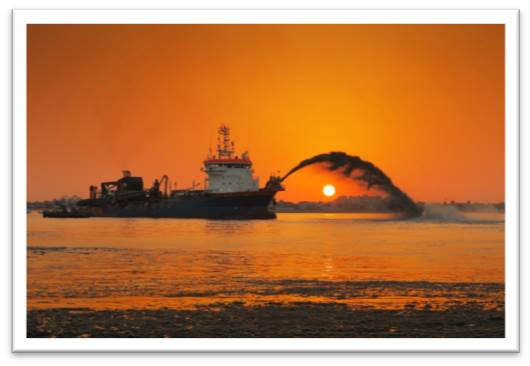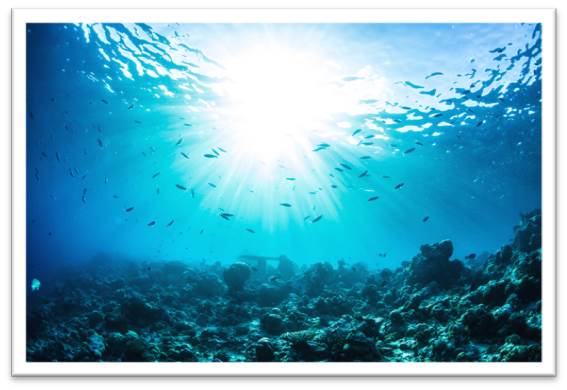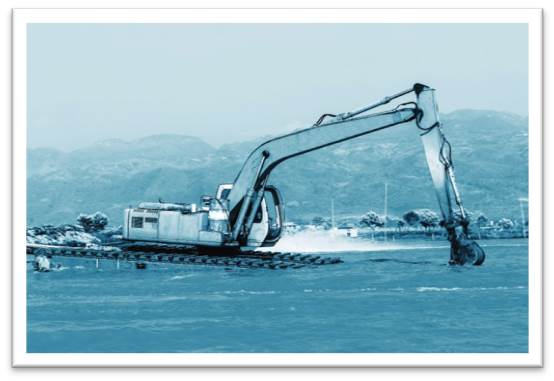Aquatec In depth - Dredge monitoring and turbidity

Monitoring environmental parameters is important in all four phases of dredging - excavation, lifting, transportation and disposal. These processes affect sedimentation and turbidity levels within a water body, which can cause short term environmental impacts, such as increases in suspended materials, mixing and loosening of sediment layers, and the potential spread of contaminants. Such factors can affect aquatic organisms and damage the ecosystem. During dredging, sediment should be extracted using the most effective method to prevent or reduce these impacts.
Since one project can differ substantially from the next, each project will follow different regulations, which are determined by environmental laws, the location of the site, sediment properties and guidelines set out by local environmental agencies. These regulations need to be considered during all stages of dredging, which is why it is important to monitor turbidity and sediment processes before, during and after dredging activities have taken place. By doing this, operators will have a better understanding of the water environment and can make appropriate operational decisions based on this knowledge. Any fluctuations in suspended materials can be highlighted to allow dredging operators to respond effectively.
Turbidity and Dredging
Although there are many natural events that influence turbidity levels, such as rainfall, river flows and hydrodynamic conditions, dredging is known to have a significant impact. Dredging activities cause turbidity levels to rise due to the increase of particles in suspension. Suspended sediment also directly stresses organisms by reducing the efficiency of their respiration processes. As aquatic organisms are reliant on sunlight, high turbidity levels can affect the food web by hindering photosynthetic processes, which can lead to mortality of plants and fauna. Coral can be particularly vulnerable to changes in water clarity and increases in sediment. It is important that during dredging these areas are protected. A reduction in water clarity can also affect the behaviour of aquatic organisms, as they are less likely to see their food, predators and mating partners, which can lead to a decrease in population of species within dredging areas. Monitoring turbidity is considered an essential part of dredging. Turbidity data can be used as a proxy for the total suspended sediment (TSS). Turbidity sensors have become a popular method of attaining TSS information. Alternatively, acoustic backscatter instruments can be used for suspended sediment profiling.
Measuring SSC
The suspended sediment concentration (SSC) in a body of water can affect the species and population of aquatic organisms inhabiting the area. SSC data can give information on dredge plumes – where the processes of excavation, transportation and deposition of sediment create clouds of particles. To reduce damage to the local ecosystems within these areas, SSC measurements can be used to indicate if the amount of suspended solids has exceeded a certain level and is considered a threat to the ecosystem. With this knowledge, operators are able to respond.
Instrumentation
The AQUAlogger 310TY is a compact turbidity logger, capable of monitoring turbidity, temperature and depth. The instrument is supplied with an SSC Converter, providing customers with a user-friendly method of converting turbidity readings to SSC. It can be deployed on a boat, mooring line, buoy or structure, or integrated within a system. The instrument has real time reporting capability as standard, making it a suitable device for dredging applications.
The AQUAscat 1000 range is a series of high frequency acoustic instruments that can observe profiles of SSC within a water column to give information on the sediment processes taking place. Profiles can be observed at a single location to produce a time series or transects taken to observe spatial variability, making the instruments ideal for dredge plume monitoring. Dredging operators can benefit from having more information on SSC fluctuations throughout all stages of dredging.
Monitoring before
Monitoring environmental parameters prior to dredging can give key stakeholders a baseline of knowledge on the water environment. This information is essential as it can be used to compare with the information attained during and after dredging. Using the AQUAlogger 310TY, the user can be aware of the natural turbidity levels within the water body. This baseline of information will be critical in future analysis of data. AQUAscat instruments are ideal for monitoring SSC before dredging operations take place, as they can provide information on the natural sediment processes that take place before dredging has been carried out.
Monitoring during
Immediate information is vital during dredging operations. A monitoring system that gives real time data is considered the most effective way for operators to respond to substantial changes in turbidity or sediment. When levels of re-suspension increase beyond a certain point, operators can act immediately to prevent it becoming an issue. With real time reporting capability, operators can obtain immediate turbidity measurements. If water samples are taken before dredging takes place, the user set a conversion using the SSC Converter, allowing the logger to output SSC in real time.
Monitoring after
Monitoring the water after dredging activities have taken place can be done to assess the water quality and to determine any long term effects. These results can be compared to the data taken before the dredging activities took place, therefore allowing researchers to understand the environmental effects. This information is also useful for environmental agencies governing dredging activities.
A real time system
The AQUAlogger 310TY can be integrated within a system to provide real time monitoring of turbidity and SSC. When monitoring turbidity for dredging, instruments can be stationed at multiple locations to give a better understanding of the environmental processes. Monitoring systems can be placed upstream to provide background data and downstream of where the dredging is taking place, so that operators can compare both sets of data. The AQUAlogger 310TY can transmit the information to a laptop on deck or via a secure website to give real time data. For the most efficient system, alarms can be integrated to notify dredging operators via email or SMS if turbidity has reached dangerous levels, which will allow dredging operators to respond promptly. Optical backscatter instruments give a single point measurement and therefore a single instrument cannot provide information at multiple depths within a water column. One solution to this is to suspend sensors at multiple depths.
References
Bray, R, N. (2008). Environmental Aspects of Dredging. The Netherlands: Taylor & Francis/Balkema.
Essink, K. (1999). Ecological effects of dumping of dredged sediments; options for management. Journal of Coastal Conservation 5, pp. 68-80.
Maren, D, S., Kessel, T. and Sittoni, C, L. (2015). The impact of channel deepening and dredging on estuarine sediment concentration. Continental Shelf Research 95, pp. 1-14.
Paukert, C., Schloesser, J., Fischer, J., Eitzmann, J., Pitts, K. and Thornbrugh, D. (2008). Effect of Instream Sand Dredging on Fish Communities in the Kansas River USA: Current and Historical Per-spectives. Journal of Freshwater Ecology, Volume 23, Number 4, pp. 623-634.
Wilber, D, H. and Clarke, D, G. (2001). Biological Effects of Suspended Sediments: A Review of Suspended Sediment Impacts on Fish and Shellfish with Relation to Dredging activities in Estuaries. North American Journal of Fisheries Management 21, pp. 855-875.
Find out more
For more information on the AQUAscat range of instruments, click here.
For more information on the AQUAlogger 310TY, click here.